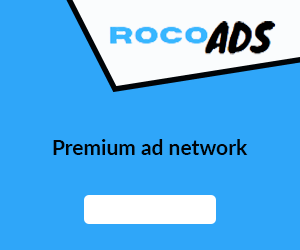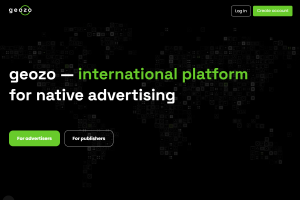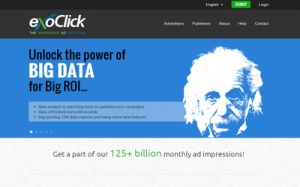Knowledge of this terms, will assist you in navigation on this website, and it will help you to choose the right content.
Advertising Network – An online advertising network or ad network is a company that connects advertisers to web sites that want to host advertisements. The key function of an ad network is aggregation of ad space supply from publishers and matching it with advertiser demand.
Paid to Promote (PTP) – Website, where a registered member gets an unique link, member can share this link on social networks, on forums or other blogs and websites, and every time that link is opened, member gets certain amount of money
Traffic Exchange – A traffic exchange website receives website submissions from webmasters that join traffic exchange networks. The person who submitted the website then has to browse other member sites on the exchange program to earn credits, which enable their sites to be viewed by other members through the surf system. This increases the number of visitors to all the sites involved.
Social Media Exchange – This is an exchanging network where people share Facebook Likes, View YouTube videos, provide Google-Plus, Visit Websites and etc. In return they get points. These points can be used to get additional fans or convert points to money for cashout.
Above the Fold – A company that connects advertisers to web sites that host advertisements.
Action – An action occurs when the user gets involved with either the banner, the landing page or something else relevant to the campaign. It depends on the campaign and its purpose what should be defined as an action. An example of an action could be when the user clicks on a button on the landing page to open a map showing all the stores of the advertiser.
Ad Space (Ad Zone) – The space on a web page that is reserved exclusively for banner advertisements.
Advertiser – An individual or entity buying online advertising space.
Affiliate – A webmaster who signs up with a sponsor’s Affiliate Program and places advertisements (banners and/or text links) on his/her site in order to earn commissions by sending surfers to the sponsor’s site. Also called a publisher.
Affiliate Marketing (Associate Program) – is a type of performance-based marketing in which a business rewards one or more affiliates for each visitor or customer brought by the affiliate’s own marketing efforts.
Auto Surfs – are traffic exchanges that automatically rotate advertised websites in one’s web browser. Therefore, they are capable of bringing a large amount of traffic to the advertised websites. Members earn credits for each site that they view, which can then be spent to advertise members’ sites by adding them to the autosurf rotation. Sites may additionally be added by external advertisers who pay the autosurf operators.
Banner Ad or Web Banner – is a form of advertising on the World Wide Web delivered by an ad server. This form of online advertising entails embedding an advertisement into a web page. It is intended to attract traffic to a website by linking to the website of the advertiser. The advertisement known as a “click through.” In many cases, banners are delivered by a central ad server.
Banner Exchange – Network where participating sites display banner ads in exchange for credits which are converted (using a predetermined exchange rate) into ads to be displayed on other sites.
Behavioral Targeting – comprises a range of technologies and techniques used by online website publishers and advertisers aimed at increasing the effectiveness of advertising using user web-browsing behavior information. In particular, behavioral targeting uses information collected from an individual’s web-browsing behavior (e.g., the pages that they have visited or the searches they have conducted) to select advertisements to display.
Bi-Weekly – may refer to an event that occurs either twice weekly or once every two weeks. The usage “every two weeks” is more common, but both usages are common and may lead to ambiguity.
Bot (Internet bot, Web Robot or WWW Robot) – is a software application that runs automated tasks over the Internet. Typically, bots perform tasks that are both simple and structurally repetitive, at a much higher rate than would be possible for a human alone.
Botnet or Zombie Army – is a number of Internet computers that, although their owners are unaware of it, have been set up to forward transmissions (including spam or viruses) to other computers on the Internet.
Category Targeting – A type of online advertising targeting that allows advertisers to target potential customers based on the interests of the site users.
Cheating – Various practices by webmasters to falsely inflate commissions. This commonly consists of signing up for a pay-per-click-through program, placing the banner on a site, and repeatedly clicking it (either manually or automatically via a script or refresh) Sponsors have various systems in place to catch this by looking for patterns such as a very high ratio of click-throughs to total views, or a very low conversion rate, or many clicks coming from the same IP address or range of IPs. Sponsors will refuse to pay anyone accused of cheating.
Click-TAG – A parameter used in Flash banner ads. The click-TAG is a variable that defines the destination URL and enables the ad serving networks to gain metrics such as the number of clicks, views, and on which sites these clicks and views have happened.
Click-Through Conversion – A conversion that results from a user clicking an ad and then converting as a direct result.
Click-Through URL – The URL that users are sent to when they click on a CAPPTURE ad.
Compensation Methods (Commission Type) – Pricing models and business models used for the different types of internet marketing, including affiliate marketing, contextual advertising, search engine marketing (including vertical comparison shopping search engines and local search engines) and display advertising.
Contextual Advertising – is a form of targeted advertising for advertisements appearing on websites or other media, such as content displayed in mobile browsers. The advertisements themselves are selected and served by automated systems based on the content displayed to the user.
Conversion – The metric used to measure a completed transaction as result of an ad. Examples include: a purchase of a product or service, sign-up for a newsletter or lead form, or a user registering for a new account.
Cookie – A file used to identify and store a variety of pertinent information on a computer. They are placed during a user action by an external source, and can only read by the server hosting that data.
Cookie Duration – The ability to adjust the lifetime of a cookie to target users ad different stages of the consideration cycle.
CPA (Cost Per Action) – (sometimes known as Pay Per Action or PPA; also Cost Per Conversion) is an online advertising pricing model, where the advertiser pays for each specified action – for example, an impression, click, form submit (e.g., contact request, newsletter sign up, registration etc.), double opt-in or sale.
CPC (Cost Per Click) or PPC (Pay Per Click) – means advertisers pay each time a user clicks on the ad.
CPE (Cost Per Engagement) – aims to track not just that an ad unit loaded on the page (i.e., an impression was served), but also that the viewer actually saw and/or interacted with the ad.
CPL (Cost Per Lead) – is an online advertising pricing model, where the advertiser pays for an explicit sign-up from a consumer interested in the advertiser’s offer. It is also commonly called online lead generation.
CPM (Cost Per Mille) – often abbreviated to CPM, means that advertisers pay for every thousand displays of their message to potential customers (mille is the Latin word for thousand).
CPO (Cost Per Order) – An order occurs when the user buys a product or a service from the advertiser.
CPP (Cost per Point) – is the cost of an advertising campaign, relative to the rating points delivered. In a manner similar to CPM, cost per point measures the cost per rating point for an advertising campaign by dividing the cost of the advertising by the rating points delivered.
CPS (Cost Per Sale) or PPS (Pay Per Sale) – is an online advertisement pricing system where the publisher or website owner is paid on the basis of the number of sales that are directly generated by an advertisement.
CPV (Cost Per View) – is online advertising ad model based on where advertisers pay for the delivery of a targeted visitor to the advertiser’s website. Meaning the publisher is only paid when a user goes to a website.
CTR (Click Through Rate) – is a way of measuring the success of an online advertising campaign for a particular website as well as the effectiveness of an email campaign by the number of users that clicked on a specific link.
Display Advertising – is a type of advertising that is located on websites. It can be seen in a wide range of different formats and contains items such as texts, images, flash, video and audio.
DSP (Demand Side Platform) – This refers to technology companies that connect with multiple ad exchanges to give individual advertisers the ability to bid on this combined inventory.
eCPC – is Enhanced cost per click in online advertising. While CPC is the actual price for each click when buying clicks, eCPC is a calculated metric that tells you what the CPC would have been if you bought clicks instead of impressions, actions etc.
eCPM – stands for ‘effective CPM’ and is an estimate of the revenue you will achieve in 1000 page views based on your earnings thus far.
Email Marketing – is directly marketing a commercial message to a group of people using email. In its broadest sense, every email sent to a potential or current customer could be considered email marketing. It usually involves using email to send ads, request business, or solicit sales or donations, and is meant to build loyalty, trust, or brand awareness.
Flight/Flight Dates – The time period and associated start and end dates of a given campaign.
Frequency Capping – Frequency refers to the rate a particular user is exposed to specific creative or campaign during a designated period of time.
Geo Targeting – in geomarketing and internet marketing is the method of determining the geolocation of a website visitor and delivering different content to that visitor based on his or her location, such as country, region/state, city, metro code/zip code, organization, IP address, ISP or other criteria.
HTTP referer – (originally a misspelling of referrer) is an HTTP header field that identifies the address of the webpage (i.e. the URI or IRI) that linked to the resource being requested.
IN-image Advertising – is a form of contextual advertising where specific images on a website are matched with related advertisements.
IN-text Advertising – is a form of contextual advertising where specific keywords within the text of a web-page are matched with advertising and/or related information units.
Incentivized Traffic – Visitors to a website that receive compensation or incentive for visiting the site. A common form of incentivized traffic happens when one site offers visitors incentives such as cash for clicking through to various other sites. This traffic is often seen as less-valuable traffic, because many people are visiting simply to receive an incentive.
Jingling – is a traffic exchange bot which runs in the background, probably the most widely used in the world due to its convenience.
IFrame (Inline Frame) – is an HTML document embedded inside another HTML document on a website. The IFrame HTML element is often used to insert content from another source, such as an advertisement, into a Web page.
Lead – A lead occurs when the campaign gives the advertiser a potential new customer or new sale. The potential customer could leave their email address or their phone number, or sign up for a newsletter, so that the advertiser could act on that information later on.
Leader Board – A banner that is sized 728 x 90 pixels.
NET7, NET15, NET30, NET45 and NET60 – are forms of trade credit which specify that the net amount (the total outstanding on the invoice) is expected to be paid in full and received by the seller within 7, 15, 30, 45 or 60 days after the goods are dispatched or service is completed. Net 30 or net 60 terms are often coupled with a credit for early payment.
Pageviews – The differences between pageviews and impressions (ad impressions) is quite big, and misunderstandings could be critical. While an impression is counted each time an ad is displayed, a pageview is counted each time a page is displayed.
PPP (Pay Per Post) – is a website which helps content creators such as bloggers find advertisers willing to sponsor specific content. The advertisers create opportunities (“opps”) that describe the content they are looking for (e.g. feedback, reviews, buzz, creative, video). The bloggers (sometimes referred to as “Posties”) then choose opportunities in their area of interest.
PCI (Cost Per Impression) – is a term used in online advertising and marketing related to web traffic. It refers to the cost of internet marketing or email advertising campaigns where advertisers pay each time an ad is displayed. Specifically, it is the cost or expense incurred for marketing potential customers who view the advertisement(s).
PIP (Price Interest Point) – The exchange rate has four significant figures, the last digit of these numbers is called PIP. Example, if USD / EUR trades at 1.2436 the last digit is 6 pips.
Popup ads or Pop-ups – are often forms of online advertising on the World Wide Web intended to attract web traffic or capture email addresses. Pop-ups are generally new web browser windows to display advertisements. The pop-up window containing an advertisement is usually generated by JavaScript using cross-site scripting (XSS), sometimes with a secondary payload using Adobe Flash, but can also be generated by other vulnerabilities/security holes in browser security.
PPI (Pay Per Install) – Advertiser pays publisher a commission for every install by a user of usually free applications bundled with adware applications. Users are prompted first if they really want to download and install this software. Pay per install is included in the definition for pay per action (like Cost Per Acquisition), but its relationship to how adware is distributed made the use of this term versus pay per action more popular to distinguish it from other CPA offers that pay for software downloads.
Publisher – An individual or entity selling online advertising space.
Retargeting – is an online advertising technology that sends customized ads to people who have indicated an interest in your brand by visiting your website. These users will see your ads as they navigate to their favorite blog, news site, or sports page. Technically speaking, an advertiser places a pixel, or small snippet of code, on their website to begin. This pixel identifies how potential customers interact with their website and allows for segmentation of those customers for later advertising targeting.
RPM – is Page Revenue per thousand Impressions, equivalent to CPM or eCPM. While CPM is more generic, RPM is from the publishers point of view. The term RPM is being used by Google AdSense.
RTB (Real Time Bidding) – Available when buying on an exchange, RTB allows for bidding on each impression that is available in a live auction environment. It gives advertisers the ability to maximize placement quality, ensuring they pay the lowest price.
Segmentation – An optimization technique that groups an advertiser’s customers into buckets based on the pages that they visited on the advertiser’s site (ie. shopping cart, homepage, watches, socks, etc.).
Serving – The real-time, controlled distribution of advertising creative to publisher websites.
Shopping Cart Abandonment – The highest value segment in a campaign that retargets customers who placed an item in an advertiser’s shopping cart but did not complete a purchase.
Site Targeting – A type of online advertising that allows brands to target potential customers based on the type of content being delivered on a site.
Spam – Advertisements in the form of either Unsolicited Commercial Email (UCE) which are randomly mass-mailed to large numbers of recipients who did not request or consent to them, or off-topic and/or excessive posts to newsgroups and bulletin boards. Most affiliate program agreements prohibit spam, and affiliates may be terminated without payment for violating this rule.
Spambot – is an automated computer program designed to assist in the sending of spam. Spambots usually create fake accounts and send spam using them, although in many cases it would be obvious that a spambot is sending it. This has led to the development of password-cracking spambots that are able to send spam using other people’s accounts.
Square Box – A banner that is sized 300 x 250 pixels.
Third-Party Data – Data that is purchased from third-party vendors to use in advertising targeting.
Unique Visitors – refers to the number of distinct individuals requesting pages from the website during a given period, regardless of how often they visit. (Visits refers to the number of times a site is visited, no matter how many unique visitors make up those sessions.) When an individual goes to a website on Tuesday, then again on Wednesday, this is recorded as two visits from one visitor (if the time period being measured is e.g. a week or month).
URL Shortening – is a technique on the World Wide Web in which a Uniform Resource Locator (URL) may be made substantially shorter in length and still direct to the required page. This is achieved by using an HTTP Redirect on a domain name that is short, which links to the web page that has a long URL.
View-Through Conversion – Conversion that measures customers who were shown an ad, but did not click on the ad, and later converted.
VTR (View Through Rate, VCR Video Completion Rate) – measures the number of post-impression response or viewthrough from display media impressions viewed during and following an online advertising campaign. Such post-exposure behavior can be expressed in site visits, on-site events, conversions occurring at one or more Web sites.
Wide Skyscraper – A banner that is sized 160 x 600 pixels.










RECENT COMMENTS
Saner
Alwin
Anabel
ADNAN
Daniel